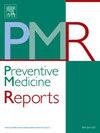第56号提案颁布前后加州辖区的烟草政策覆盖面
IF 2.4
3区 医学
Q2 PUBLIC, ENVIRONMENTAL & OCCUPATIONAL HEALTH
引用次数: 0
摘要
第56号提案于2016年在加利福尼亚州颁布,征收2美元的烟草税,这增加了对致力于减少烟草使用的地方领导机构的资助。我们研究了第56号提案是否与当地政策覆盖人口的增加有关,这些政策涉及四个方面:1)烟草零售(TRS), 2)调味烟草产品销售(FTP), 3)户外二手烟(SHS)限制,以及4)多单元住房(MUH)吸烟限制。方法对加州政策评估跟踪系统2007 - 2023年的数据进行分析。分析的单位是加利福尼亚的司法管辖区,结果是在一个司法管辖区制定政策的时间(以月为单位)。Kaplan-Meier估计和人口覆盖率百分比是通过对每个辖区的人口规模进行加权来计算的。采用离散时间生存模型来检验第56号提案对每个保单的人口覆盖率的影响。结果截至2023年1月,加州当地SHS政策覆盖了79%的人口,而当地TRS、FTP和MUH政策分别仅覆盖了55%、47%和18%。提案56后TRS和FTP政策覆盖率的增长率大于提案56前(p <;0.001),而MUH和SHS政策的增长率没有显著变化。结论提案56与TRS和FTP的制定显著增加有关,但与SHS或MUH政策无关。尽管在第56号提案之后增加了,但由于覆盖率仍然很低,需要进一步努力增加当地对TRS, FTP和MUH政策的采用。本文章由计算机程序翻译,如有差异,请以英文原文为准。
Tobacco policy coverage in California jurisdictions before and after enactment of proposition 56
Objective
Proposition 56, a $2 tobacco tax enacted in California in 2016, led to increased funding to Local Lead Agencies which work to reduce tobacco use. We examined whether Proposition 56 was associated with increases in the population covered by local policies addressing four areas: 1) tobacco retail sales (TRS), 2) flavored tobacco products sales (FTP), 3) outdoor secondhand smoke (SHS) restrictions, and 4) smoking restrictions in multi-unit housing (MUH).
Methods
2007–2023 data from the Policy Evaluation Tracking System in California were analyzed. The unit of analysis was the California jurisdiction, with outcome the time (in months) to policy enactment in a jurisdiction. Kaplan-Meier estimates and population coverage percentages were calculated by weighing each jurisdiction by its population size. Discrete-time survival models were fitted to test the effect of Proposition 56 on the rate of population coverage for each policy of interest.
Results
By January 2023, 79 % of the California population was covered by a local SHS policy but only 55 %, 47 % and 18 % was covered by a local TRS, FTP and MUH policy, respectively. The rate of increase in TRS and FTP policy coverage was greater post-Proposition 56 than pre-Proposition 56 (p < 0.001), while the rate of increase did not change significantly for MUH and SHS policies.
Conclusions
Proposition 56 was associated with marked increases in the enactment of TRS and FTP, but not SHS or MUH policies. Despite increases post-Proposition 56, additional efforts are needed to increase local adoption of TRS, FTP and MUH policies because coverage remains low.
求助全文
通过发布文献求助,成功后即可免费获取论文全文。
去求助
来源期刊

Preventive Medicine Reports
Medicine-Public Health, Environmental and Occupational Health
CiteScore
3.90
自引率
0.00%
发文量
353
 求助内容:
求助内容: 应助结果提醒方式:
应助结果提醒方式:


